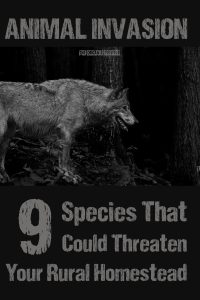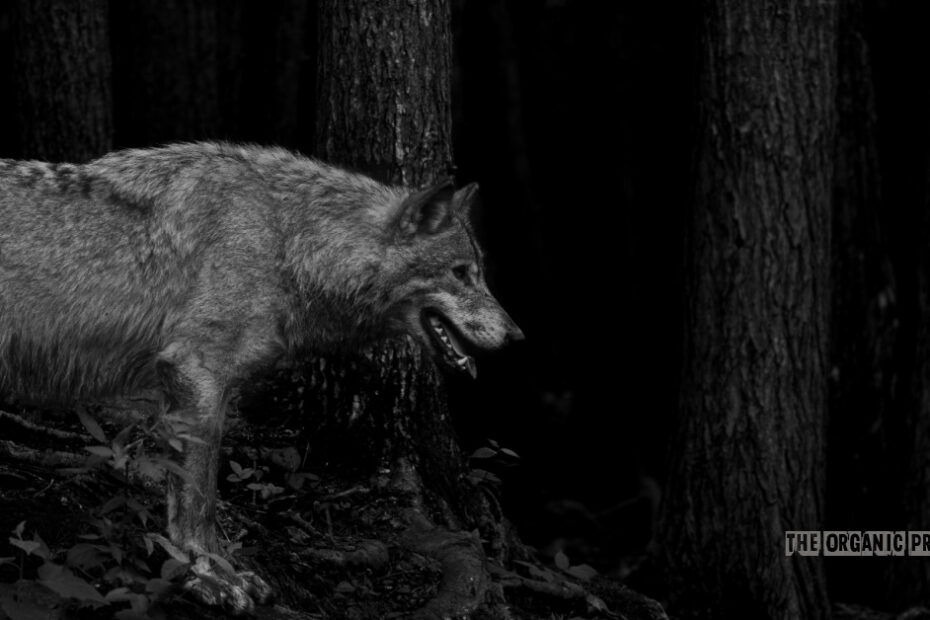[ad_1]
(Psst: The FTC wants me to remind you that this website contains affiliate links. That means if you make a purchase from a link you click on, I might receive a small commission. This does not increase the price you’ll pay for that item nor does it decrease the awesomeness of the item. ~ Daisy)
By Tom Lovrić
If you live in the country, one of the issues you’ll face is a constant animal invasion. They don’t do it on purpose, really – if you think about it, you’re the one who moved into their territory.
In an ideal world, you could share the area with them, and to achieve that, you’ll have to mark your territory the same way they do.
Based on research and my own experience, there are a few species you need to look out for the most, and in this article, I’ll tell you a bit about them, and we’ll see exactly what dangers they may pose.
Before we start, though, I’d like to insert a disclaimer.
The animals discussed in this article usually don’t mean you any harm. In fact, they’re mostly not interested in you or your family, and they’ll never attack you unless they’re threatened or starving.
They’re mostly interested in your crops and/or livestock, so they’re naturally attracted to your home. Getting physically close to you is what poses a real threat, and this is something to keep in mind.
The safest thing for both you and them is to keep your distance and admire them from afar.
Which animals invade gardens and pose a danger?
To save you from a whole lot of reading, here’s a simplified table.
| Species | Why Are They Dangerous? |
| Wolves | Killing and eating livestock, possibly harming people. |
| Bears | Eating crops, killing and eating livestock, possibly harming people. |
| Mountain Lions | Killing and eating livestock, possibly harming people. |
| Deer | Eating crops (and some flowers). |
| Moose | Destroying crops (by walking over them), possibly harming people. |
| Raccoons | Eating crops, possibly harming people (carriers of rabies and other illnesses). |
| Skunks | Possibly harming people with their spray (bites are rare, but they’re carriers of rabies). |
| Venomous Snakes | Possibly harming people, capable of eating small animals. |
This list is certainly not comprehensive – different regions have different threats. But these are some of the most prevalent animals to look out for if you have a place in the country.
Wolves: behavior and diet
Wolves aren’t afraid of venturing into yards, especially if they can find sheep, goats, pigs, cattle, horses, or chickens there. They will return to the same spot for food unless the pack migrates, so you can expect several invasions if you don’t put up a fence.
They’ll avoid conflict with humans if possible and usually attack only if you get too close, but they are territorial animals, after all, and they won’t let go of their territory easily, especially if it’s a good hunting ground.
A starving wolf may attack an adult person (even if the wolf is completely alone).
Wolves are not scared off easily, especially when they have a stable supply of food. If there are wolves around your home, you’ll have to fire a few warning shots or even open fire on them to scare them away. Even then, they may return the next day if they really want the animals in your yard.
Quite frankly, they’re relentless when it comes to food, and they’ll only quit if their lives are in danger.
With that final thought in mind, it’s best to keep them away from you with a tall fence – that’s much easier than having to deal with them all the time.
Bears: behavior and diet
Bears (both black and brown) are curious animals, and they eat vegetables more than anything else. In fact, vegetables and roots make up more than 50% of their diet. If they find your garden, they will eat as much fruit and vegetables as possible. If you have livestock, bears will most likely kill it and eat it.
They won’t attack humans unless they’re particularly hungry or if you get too close, and they’re actually easier to scare off than wolves. Just like wolves, however, they may return even after you scare them off.
Mother bears with cubs are the exception. They are some of the most dangerous animals on the planet, and they will charge at the slightest hint of a threat.
Mountain lions: behavior and diet
Mountain lions actively avoid conflict with humans and try not to approach manmade structures, but they will come after livestock if they’re starving. They can kill any animal you have, including horses.
They can be scared off with warning shots, but you should never run if you come across a mountain lion, as it’ll kick off their prey drive and chasing instinct. You should also not stand still, as they’ll see you as easy prey (even if they normally don’t attack humans). Slowly walk backward, and try shouting and making yourself seem large to scare the cougar away.
Mothers with cubs will attack anything that gets close – finding a mother mountain lion in your garden is pretty much the worst-case scenario.
Deer: behavior and diet
Deer are mostly harmless to people – their first instinct is to always run, and when they do harm people, it’s usually by running into a person by accident.
They pose a danger to shrubs and crops, however. Sunflowers, berries, and various flowers are often victims of deer. Since they’re incredible jumpers (depending on species and size), a really tall fence is needed to keep them away.
Moose: behavior and diet
Moose aren’t interested in your crops, but they may pass through the area and destroy them as they walk over them. These animals are much larger than bears, and they’re not too bright.
They’re usually harmless, but males can be aggressive during mating season and charge you. This, combined with their size, makes them incredibly dangerous. It’s best to keep them away.
Raccoons: behavior and diet
Raccoons are omnivores – they’ll eat your fruits, vegetables, and meat. They’re particularly attracted to trash and leftovers, and they’re not afraid of getting close to humans at all. They’re so daring that they sometimes steal food out of a person’s hand!
Some raccoons are carriers of rabies, which makes them potentially dangerous for us. They can also be dangerous for your chickens.
Skunks: behavior and diet
Skunks aren’t as interested in your crops as much as they’re interested in the small food in your yard. They feed on earthworms, grubs, small snakes and lizards, rodents, birds, and eggs.
They’re also particularly interested in shelter. Skunks are burrowing animals, but if they find potential shelter (the crawl space under your porch, for example), they’ll call it home.
Since they’re potential carriers of rabies, not to mention their stinging spray, it’s important to keep them away.
Rats and mice: behavior and diet
These small rodents are drawn to the abundance of food present at a homestead and a warm, cozy shelter. Rats may pose a danger to small livestock such as baby chicks and also will eat eggs. But rats and mice are most interested in your livestock feed.
The best prevention is keeping feed sealed away tightly in galvanized steel containers. Anything less, and they’ll chew right through the container to the food inside. Cats are also a great preventative measure.
They can also pose a danger to your structures by destroying wiring and creating holes by chewing to get to food or create shelter.
As far as humans are concerned, the biggest dangers from rats and mice are the diseases they carry: they can be carriers of rabies, and their feces can contain hantavirus, with potentially deadly outcomes. If you are cleaning up after rodents, it’s very important to wear a mask and gloves and not to inhale or touch their droppings. They are more scared of you than you are of them and will only bite if cornered and threatened.
Venomous snakes: behavior and diet
Snakes have the same motivation as skunks – your home can provide shelter, and there’s definitely good food close by.
Most snakes are harmless (if anything, they’re good at keeping pests away), but there are more than 20 species of venomous snakes in North America (the majority of which live in the USA and Mexico), and this needs to be discussed.
No snake will attack you unless you threaten it first. However, grabbing them, stepping on them, or simply getting too close can provoke an attack.
Since some snake venom is potent enough to kill adults, it’s best to keep them away. They’ll also eat eggs and baby chicks, and a large snake is capable of eating an adult chicken.
Admiring from a distance

Personally, I love animals (bears are my favorite animals, in case anyone was wondering), but I understand the danger they can pose to us and our homes if we don’t set clear boundaries.
This article only delved into detailed explanations of the most common species a person may find in their yard. Not all of these species can be fenced away, and we’ll take a look at effective control methods in another article.
If there’s anything I want you to get out of this – it’s the understanding that different species are dangerous for different reasons. Some species only pose a threat to your crops, others are dangerous to your livestock, while some species are dangerous to you as well.
This understanding is the first step towards peaceful cohabitation.
What are your experiences with these animals? Have you ever had any encounters? Have you experienced any of the dangers mentioned in the article?
Let’s talk about it in the comments.
About Tom
Tom is a former military reconnaissance scout with three years of extensive training and first-hand experience in navigation, first aid, firearms maintenance, combat, and wilderness survival. He is also an avid hiker and all-around outdoorsman, with a lifetime of experience in the wild. Aside from writing and sports, emergency preparedness is one of his biggest interests, and he’s a big believer in being ready for anything the world may throw at you. You may contact him at [email protected].
[ad_2]
Source link
